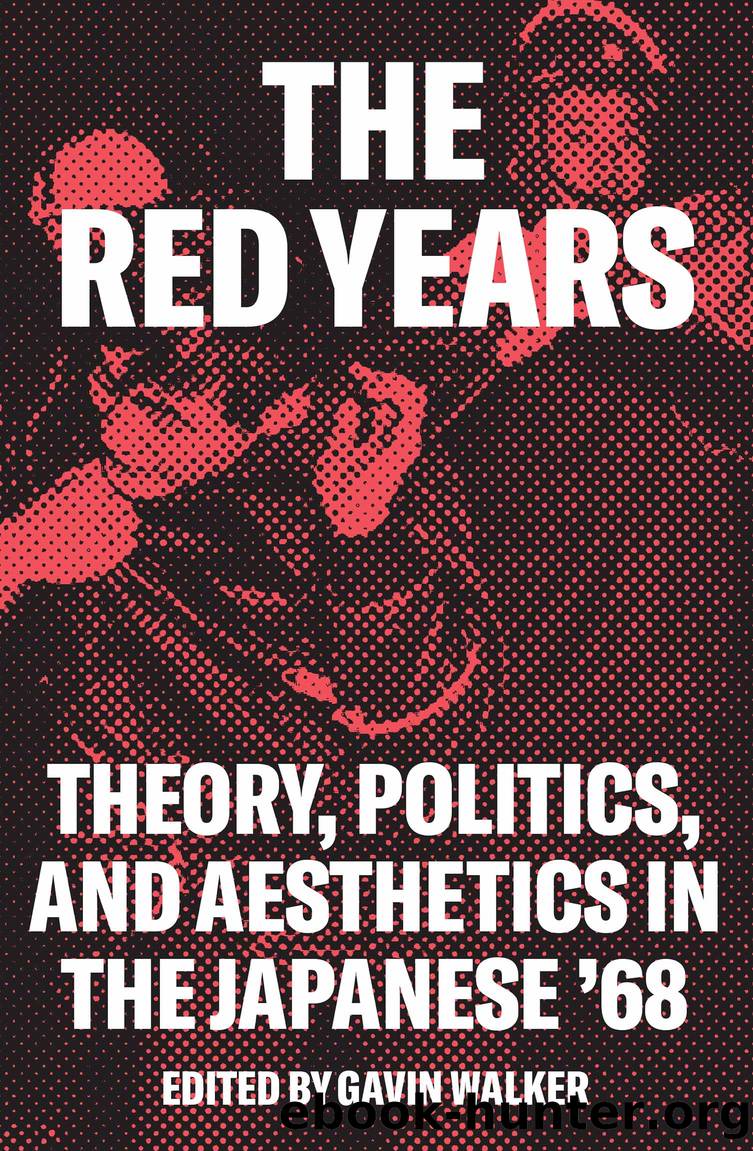The Red Years: Theory, Politics, and Aesthetics in the Japanese â68 by Gavin Walker

Author:Gavin Walker
Language: eng
Format: epub
Publisher: Verso
The New Left in Japan as a âMaleâ Movement?
It is important to place the sexism of the New Left in Japan at the center of any understanding of how that movement functioned. Through exploring the concept of the âeverydayâ as it operated in the New Left, we can also see how that sexism lived alongside the potential for liberation in the movement. Since a women-only radical movement emerged not only from the Japanese New Left, but from New Left movements globally in the 1970s, there remains a need to understand what within the New Leftâits theories and practicesâconvinced radical women who participated in campus-based activism that they needed to form a separatist movement. Much like the New Left in Japan, feminism in Japan was not simply a reaction to external influences, although news about activities elsewhere intensified activistsâ feelings that they were part of a global movement.3 Male chauvinism proved to be a defining characteristic of many womenâs experiences of New Left activism around the world, which undermines arguments that Japanese sexism is some kind of immutable and ahistorical feudal remnant handed down to the present and unchanged over time. Indeed, young women growing up under democratizing postâWorld War II reforms that included a radical renegotiation of relations between the sexes often felt optimistic that male chauvinism would quickly become obsolete through new coeducational policies and legally protected egalitarian marriages. The postwar student movement operated in a new context in which men and women studied side by side, and coeducational institutions opened up a new space for young people to experiment with gendered expectations and produced a radical student movement that integrated women to a degree not previously plausible.
Although the scope of participation makes it impossible to generalize the experience of female student activists in the late 1960s New Left, many similarities mark the narratives of women who became involved in campus activism and who also became disenchanted with it. This chapter draws upon accounts written by women involved in the New Left who identified themselves as âordinaryâ students and who did not participate in formal sects, as well as those who wrote about their New Left experiences after participating in feminist activism. It is particularly tricky to get at the experiences of female student activists who did not join in the subsequent women-only movement. Female students were active across sects and campuses in the late 1960s student New Left, however, joining for reasons similar to those of their male comrades: they felt compelled by the global situation and the paradoxes they saw in their society, and it felt like a natural part of being a student and a member of their campus community. One survey conducted in the early 1990s published the results of 529 questionnaires filled out by people who self-identified as part of the late 1960s student New Left at eighty-one higher education institutions across Japan. That publication included the testimonies of forty-three female respondents from twenty-four universities, each involved in a diverse range of political activities with varying levels of commitment at the time and afterward.
Download
This site does not store any files on its server. We only index and link to content provided by other sites. Please contact the content providers to delete copyright contents if any and email us, we'll remove relevant links or contents immediately.
| Africa | Americas |
| Arctic & Antarctica | Asia |
| Australia & Oceania | Europe |
| Middle East | Russia |
| United States | World |
| Ancient Civilizations | Military |
| Historical Study & Educational Resources |
The Third Pole by Mark Synnott(709)
Money for Nothing by Thomas Levenson(663)
The Economist (20210109) by calibre(624)
Christian Ethics by Wilkens Steve;(607)
Made in China by Anna Qu(585)
100 Posters That Changed The World by Salter Colin T.;(540)
The Irish Buddhist by Alicia Turner(527)
Reopening Muslim Minds by Mustafa Akyol(520)
The Age of Louis XIV: The Story of Civilization by Will Durant(508)
Routledge Handbook of Contemporary India by Knut A. Jacobsen(504)
Nonstate Warfare by Stephen Biddle(499)
Ideology by Eagleton Terry;(492)
Culture by Terry Eagleton(490)
The Great Pyramid Void Enigma by Scott Creighton(486)
The Shortest History of China by Linda Jaivin(471)
Objects of Vision by Saab A. Joan;(460)
Banaras: CITY OF LIGHT by Diana L. Eck(456)
The Jews of Silence: A Personal Report on Soviet Jewry by Elie Wiesel(454)
Sybille Bedford by Selina Hastings(451)
